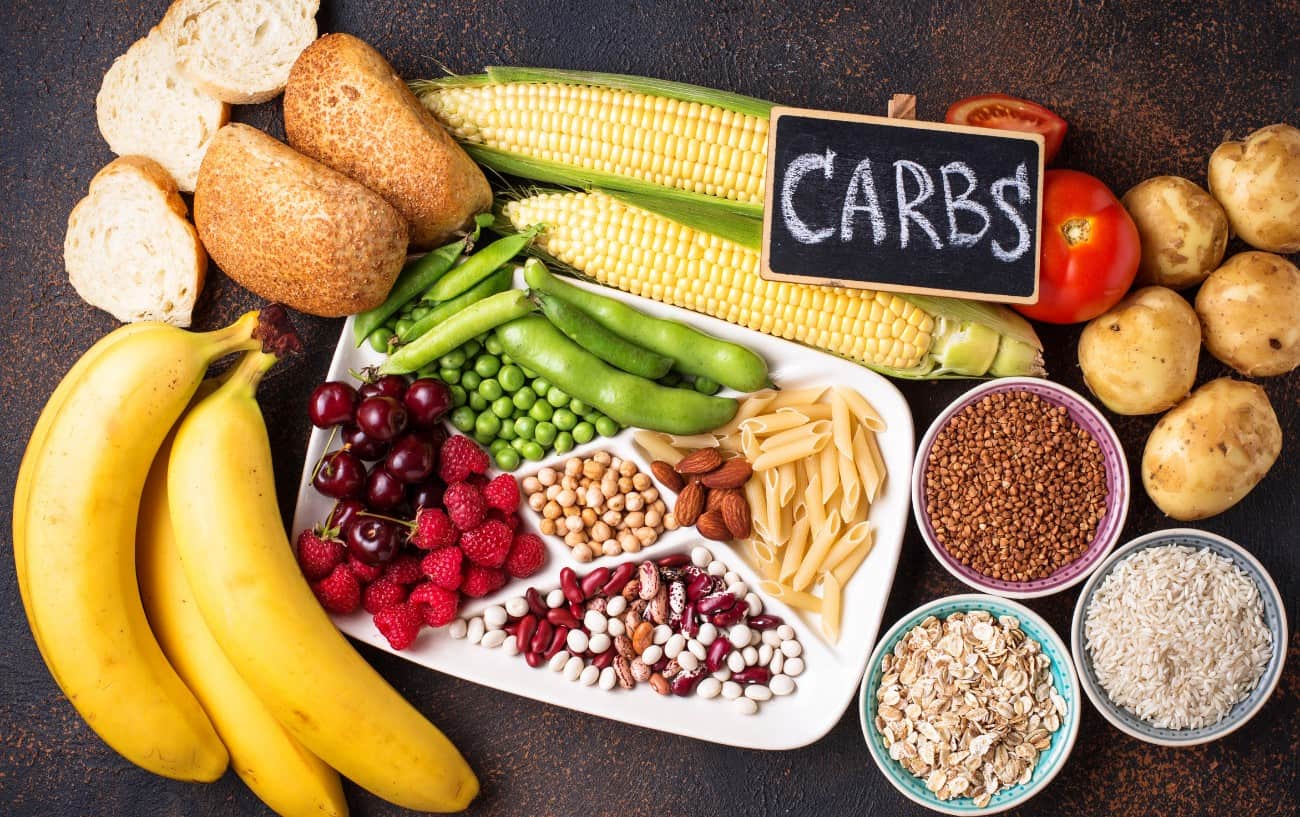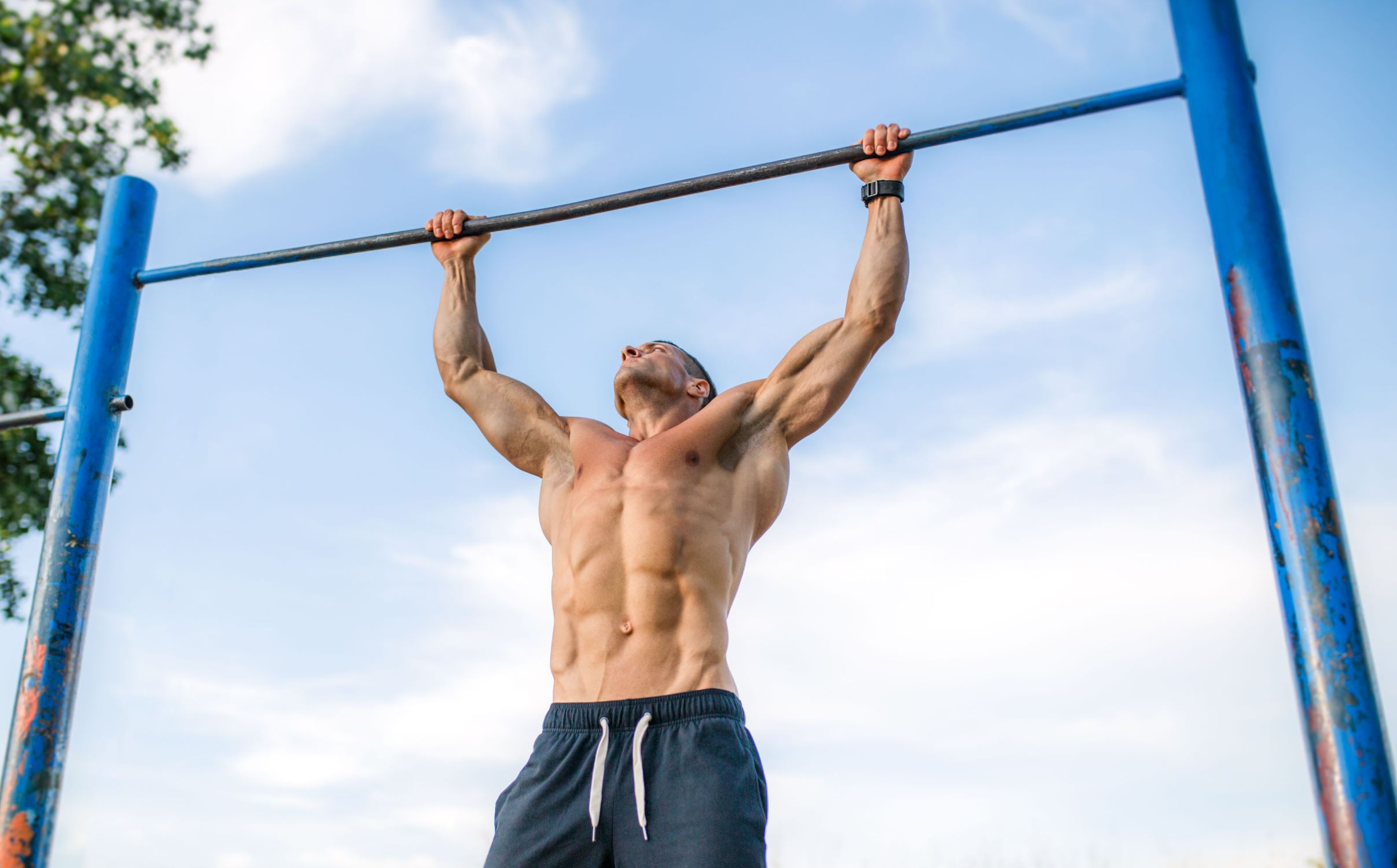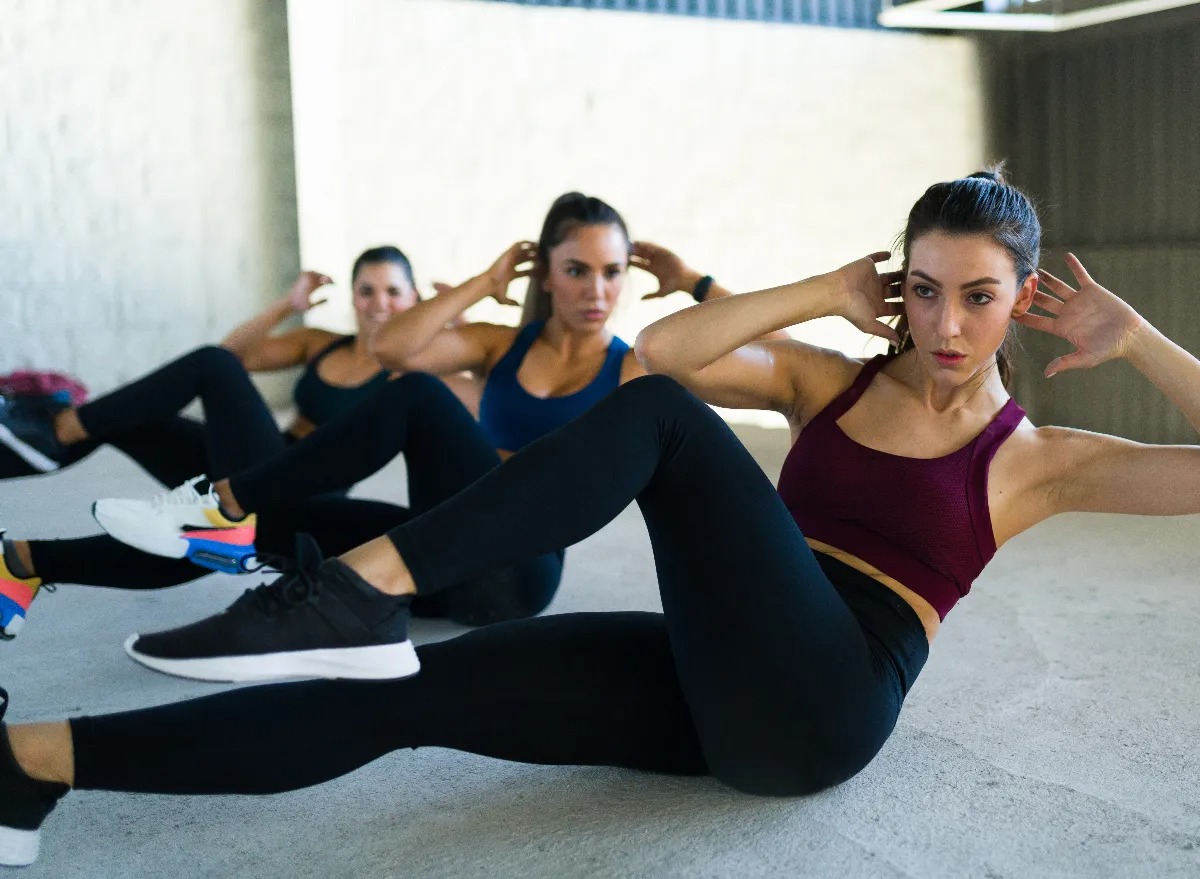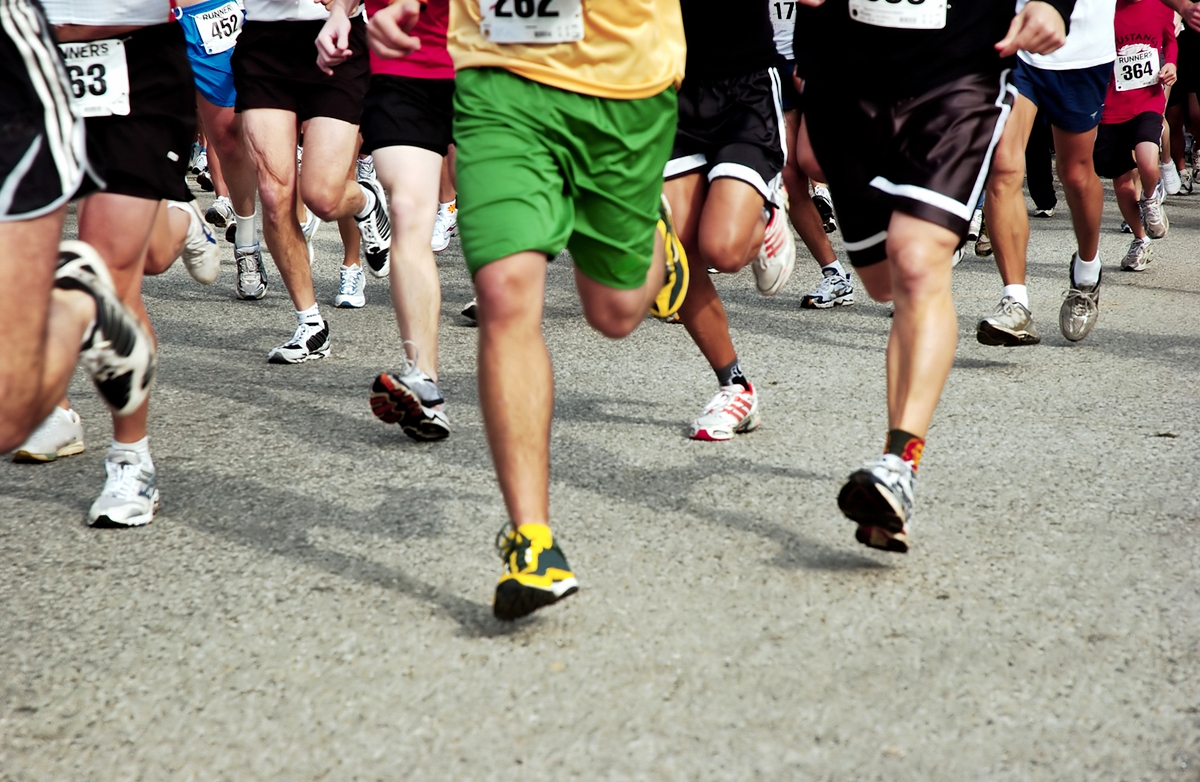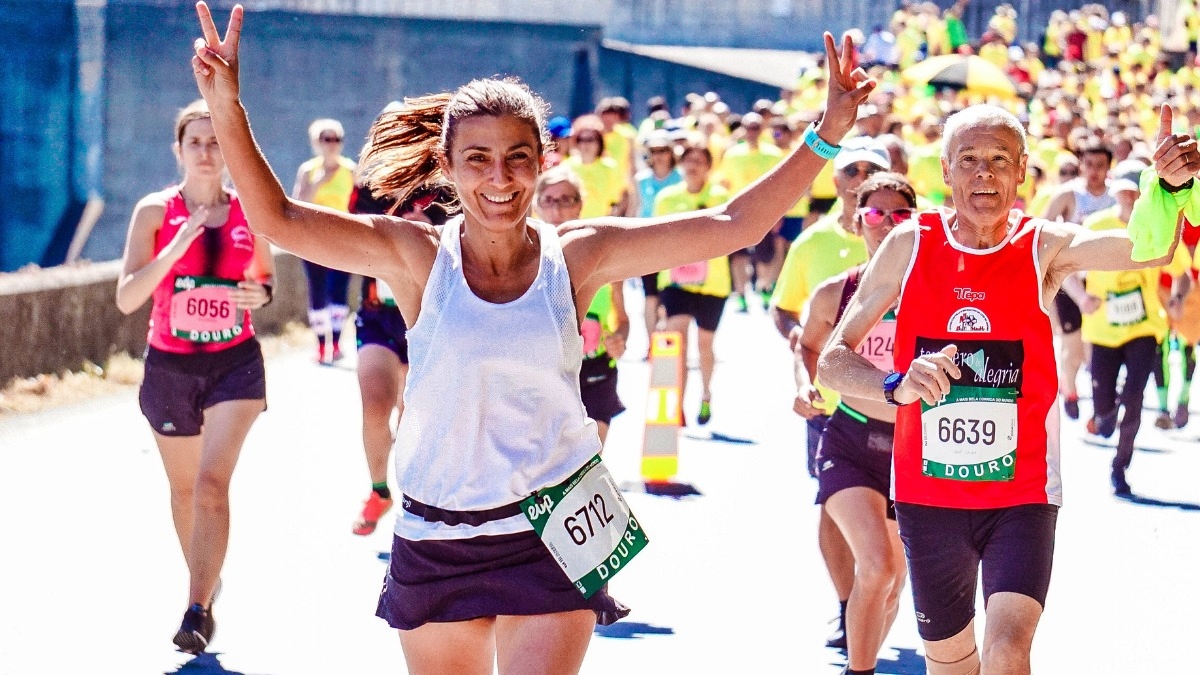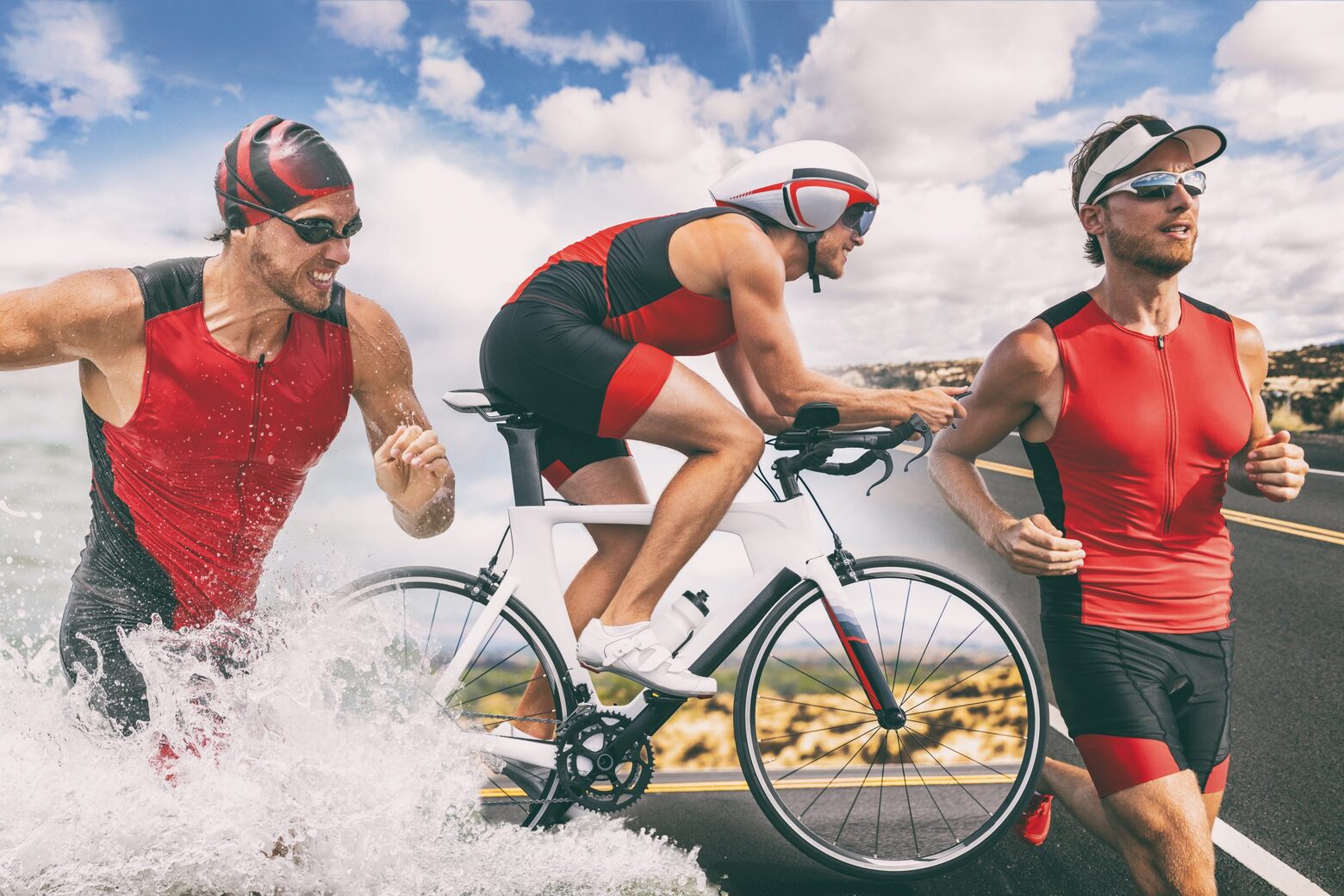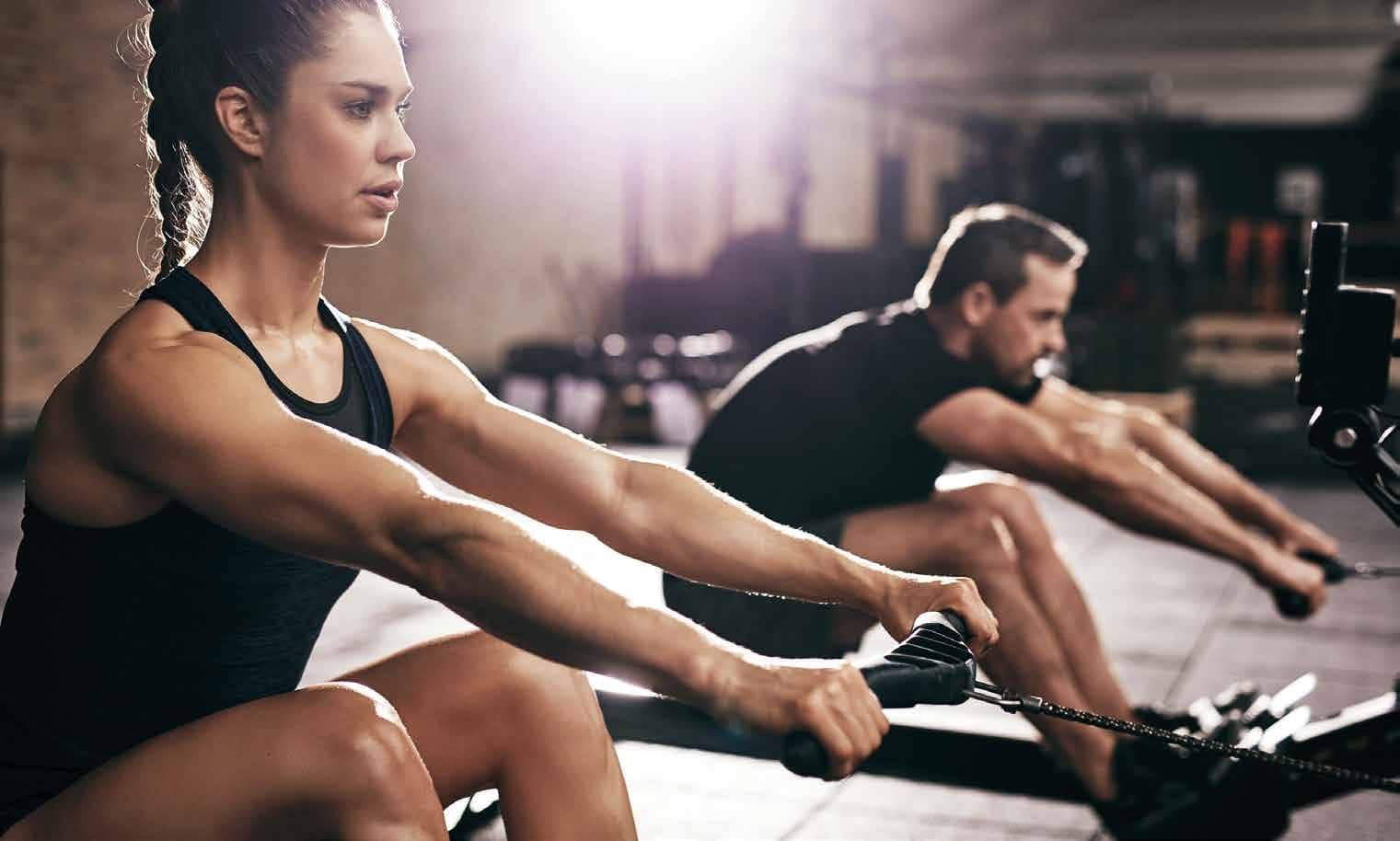Home>Misc>Featured>High Intensity Interval Training And When To Eat
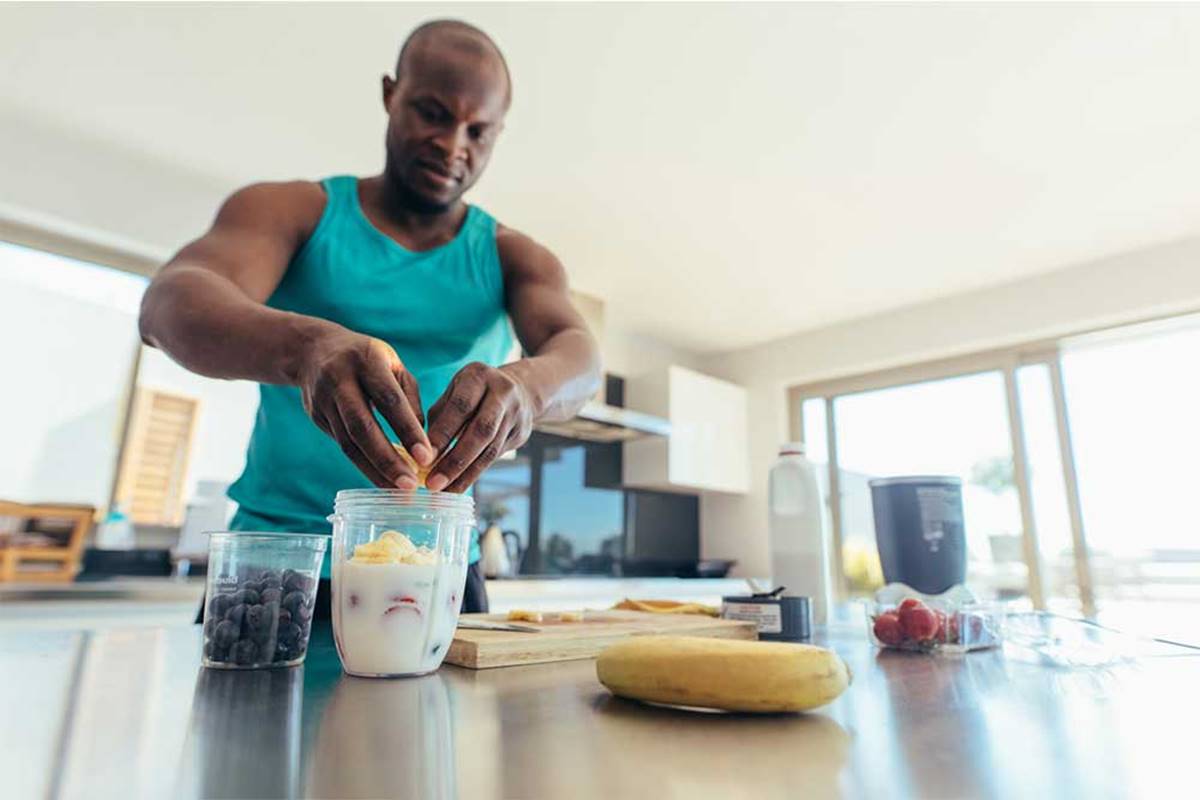

Featured
High Intensity Interval Training And When To Eat
Modified: March 2, 2024
Discover the benefits of high-intensity interval training and learn the best times to eat with Mercola. Explore our featured content for expert advice and tips.
Introduction
Welcome to the world of high intensity interval training (HIIT)! If you’re looking to supercharge your fitness routine and achieve optimal results in a shorter amount of time, then HIIT might just be the answer you’re looking for.
HIIT is a form of exercise that combines short bursts of intense activity with periods of rest or lower intensity exercise. It has gained popularity in recent years due to its effectiveness in burning calories, improving cardiovascular health, and building lean muscle mass. But it’s not just about the workout itself – nutrition also plays a crucial role in maximizing the benefits of HIIT.
In this article, we will delve into the world of HIIT and explore the relationship between HIIT and nutrition. We will discuss the various benefits of HIIT, different workout options, and most importantly, how to time your meals for optimal performance during your HIIT sessions.
So, if you’re ready to take your fitness journey to the next level and learn how to fuel your body for success, let’s dive in!
What is High Intensity Interval Training (HIIT)?
High Intensity Interval Training, commonly known as HIIT, is a form of exercise that involves short, intense bursts of activity followed by periods of rest or lower intensity exercise. Unlike traditional steady-state cardio workouts, such as jogging or cycling at a moderate pace for an extended period of time, HIIT alternates between high intensity and recovery intervals, creating a more challenging and dynamic workout.
The intense bursts of exercise during HIIT sessions push your body to its limits, causing it to burn more calories and improve overall fitness in a shorter amount of time. The workouts typically range from 10 to 30 minutes and can be customized to fit your fitness level and goals.
During a HIIT workout, you may perform exercises like sprinting, jumping jacks, burpees, or mountain climbers at maximum effort for a set amount of time, usually around 20 to 60 seconds. After each intense interval, you will have a brief recovery period, where you can either rest completely or engage in low-intensity exercise like walking or slow cycling.
One of the key principles of HIIT is the concept of “afterburn” or excess post-exercise oxygen consumption (EPOC). This refers to the increased calorie and fat burning that occurs in the hours after a HIIT workout. The intense nature of HIIT causes your body to consume more oxygen, which in turn increases your metabolic rate and prolongs the fat-burning effect long after the workout is complete.
Benefits of High Intensity Interval Training (HIIT)
High Intensity Interval Training (HIIT) offers a myriad of benefits that make it a highly effective and time-efficient workout option. Let’s explore some of the key advantages of incorporating HIIT into your fitness routine:
- Efficient calorie burning: HIIT has been shown to burn more calories in a shorter amount of time compared to steady-state cardio exercises. The intense intervals stimulate your metabolic rate and keep it elevated even during the recovery periods. This means that you continue to burn calories even after you’ve finished your workout.
- Improved cardiovascular health: Regular HIIT workouts can significantly improve cardiovascular fitness by increasing your heart rate and oxygen consumption. This leads to better endurance and a stronger heart muscle, lowering the risk of cardiovascular diseases.
- Time-saving: The time-efficient nature of HIIT is one of its most appealing aspects. With just 10-30 minutes of intense workout, you can achieve the same, if not more, benefits as a longer duration cardio session. This makes HIIT ideal for people with busy schedules who struggle to find time for exercise.
- Fat loss: HIIT has been found to be highly effective in burning stubborn body fat, especially in the abdominal area. The intense intervals increase the release of fatty acids from fat stores, targeting those hard-to-lose areas and promoting weight loss.
- Muscle preservation: Unlike long-duration cardio exercises, which can lead to muscle loss, HIIT preserves lean muscle mass while promoting fat loss. This is beneficial for maintaining a toned and sculpted physique.
These are just a few of the many benefits that HIIT offers. Incorporating HIIT into your fitness routine can help you achieve your goals faster, whether it be weight loss, improved athletic performance, or overall fitness enhancement.
Different HIIT Workout Options
High Intensity Interval Training (HIIT) offers a wide range of workout options that allow you to tailor your training to your preferences and fitness level. Here are a few popular HIIT workout formats:
- Tabata: Tabata is a specific type of HIIT workout that follows a 20-seconds-on, 10-seconds-off format. You perform each exercise at maximum intensity for 20 seconds, followed by a 10-second rest. This cycle is repeated for a total of 4 minutes per exercise.
- Circuit Training: Circuit training combines strength and cardiovascular exercises in a circuit or series. You move from one exercise to the next with little to no rest in between. Each circuit can be repeated for multiple rounds, and the intensity is adjusted by selecting the exercises and weights that challenge you.
- Interval Running: Interval running involves alternating between sprinting and jogging or walking. You can choose a distance, such as running 100 meters at maximum effort and then jogging for 200 meters to recover. Repeat the cycle for a set amount of time or distance.
- Pyramid: The pyramid workout involves gradually increasing and then decreasing the intensity and duration of each interval. For example, start with a 30-second high-intensity interval, followed by a 15-second rest. Then, increase the interval to 45 seconds, followed by a 15-second rest. Continue increasing the interval until you reach your peak, and then gradually decrease.
- EMOM (Every Minute on the Minute): EMOM workouts challenge you to complete a specific exercise or set of exercises within one minute. Any remaining time within that minute is your rest period. Repeat the cycle for a set number of minutes or rounds.
These are just a few examples of the many HIIT workout options available. The key is to find a format that suits your preferences, challenges you, and aligns with your fitness goals. Mix and match different exercises and intervals to keep your workouts exciting and varied.
Understanding the Importance of Nutrition in HIIT
When it comes to getting the most out of your High Intensity Interval Training (HIIT) sessions, nutrition plays a crucial role. Proper nutrition not only provides the fuel your body needs to perform at its best during workouts but also aids in recovery and muscle building post-workout.
Here are a few key points to understand about the importance of nutrition in HIIT:
- Energy requirements: HIIT workouts are intense and demand a considerable amount of energy. To ensure optimal performance, it is essential to fuel your body with the right nutrients. Carbohydrates provide the primary source of fuel for high-intensity exercise. Including complex carbohydrates, such as whole grains and fruits, in your pre-workout meals can help sustain energy levels during your workout.
- Muscle recovery and growth: HIIT places stress on your muscles, causing micro-tears that need to be repaired and rebuilt. Consuming protein-rich foods after your workouts is vital for muscle recovery and growth. Aim to consume a combination of protein and carbohydrates within 30 minutes to an hour after completing your HIIT session.
- Hydration: Staying hydrated is essential during high-intensity workouts. Dehydration can affect performance and lead to fatigue and decreased stamina. Make sure to drink enough water before, during, and after your HIIT workouts to replenish fluids lost through sweat.
- Balance and moderation: While nutrition is important, it’s essential to strike a balance. Avoid consuming heavy, high-fat meals right before your workouts, as they can cause discomfort and hinder performance. Instead, opt for lighter, easily digestible meals that provide sustained energy.
- Individual needs: It’s important to note that everyone’s nutritional needs may vary. Factors such as age, gender, body composition, and activity level can affect your specific nutrient requirements. Consulting with a registered dietitian or nutritionist can help you create a tailored nutrition plan that supports your HIIT workouts and aligns with your personal goals.
By understanding the importance of nutrition in HIIT and making informed choices about your pre and post-workout meals, you can optimize your performance, enhance recovery, and achieve your fitness goals more effectively.
Timing Your Meals for Optimal HIIT Performance
The timing of your meals plays a significant role in optimizing your performance during High Intensity Interval Training (HIIT). Here are some key considerations when it comes to meal timing:
- Pre-workout meals: Consuming a balanced meal containing carbohydrates and protein 1-2 hours before your HIIT session can provide the necessary energy and nutrients for optimal performance. Carbohydrates will fuel your muscles, while protein will aid in muscle building and recovery. Choose easily digestible foods to prevent discomfort during your workout.
- Snacks before HIIT: If you prefer a shorter time between eating and working out, having a small snack 30 minutes to an hour before your HIIT session can help boost energy levels. Opt for a carbohydrate-rich snack, such as a piece of fruit or a small granola bar, to provide quick energy without feeling heavy or bloated.
- Post-workout meals: Consuming a combination of protein and carbohydrates within 30 minutes to an hour after your HIIT workout is crucial for muscle recovery and growth. This can be in the form of a balanced meal or a protein shake. Including some healthy fats in your post-workout meal can also provide sustained energy and aid in nutrient absorption.
- Hydration: Adequate hydration is fundamental for optimal performance during HIIT workouts. Be sure to drink enough water before, during, and after your exercise session to replace fluids lost through sweat. It’s a good idea to have a water bottle with you during your workouts and to sip on water regularly.
- Individual experimentation: Everyone’s body is unique, and what works for one person may not work for another. It may take some trial and error to find the right timing and combination of foods that best support your individual performance. Pay attention to how you feel during your workouts and adjust your meal timing accordingly.
It’s important to listen to your body and find a meal timing routine that works best for you. Experiment with different strategies and observe how they impact your energy levels, performance, and recovery during and after your HIIT workouts. Consulting with a registered dietitian or nutritionist can provide you with personalized recommendations based on your specific needs and goals.
Post-Workout Nutrition Recommendations
Proper post-workout nutrition is crucial for maximizing the benefits of your High Intensity Interval Training (HIIT) sessions and promoting muscle recovery and growth. Here are some key recommendations for post-workout nutrition:
- Protein: Consuming an adequate amount of protein after your HIIT workout is essential for muscle repair and growth. Aim for a serving of high-quality protein, such as lean meats, poultry, fish, eggs, or plant-based sources like tofu or legumes. Including protein in your post-workout meal or snack helps replenish amino acids and stimulates protein synthesis.
- Carbohydrates: Replenishing your glycogen stores, which are depleted during HIIT workouts, is crucial for recovery and restoring energy levels. Include a source of carbohydrates in your post-workout meal, such as whole grains, fruits, or starchy vegetables. This will help refuel your muscles and provide energy for future workouts.
- Timing: It’s best to consume your post-workout meal or snack within 30 minutes to an hour after completing your HIIT session. This timeframe is when your muscles are most receptive to nutrients, and it allows for optimal recovery and muscle building. If a full meal isn’t possible, a protein shake or a combination of a carbohydrate-rich snack with protein can be a convenient option.
- Hydration: Rehydrating after your workout is crucial to replace fluids lost through sweat. Along with consuming water, including a sports drink or electrolyte-rich beverage can help replenish electrolytes lost during intense exercise.
- Healthy fats: While carbohydrates and protein are primary after-workout considerations, including some healthy fats in your post-workout meal can be beneficial. Fat aids in the absorption of fat-soluble vitamins and helps regulate hormone production. Incorporate sources like avocado, nuts, seeds, or olive oil in moderation.
Remember, individual needs may vary, and customization is key. Consult with a registered dietitian or nutritionist to develop a personalized post-workout nutrition plan that aligns with your specific goals and requirements. They can provide guidance in determining the appropriate portion sizes and ratios of macronutrients based on your body composition, activity level, and overall health.
Pre-Workout Meal Ideas for HIIT
Fueling your body with the right nutrients before your High Intensity Interval Training (HIIT) session is essential for optimal performance. Here are some pre-workout meal ideas that provide a balance of carbohydrates, protein, and essential nutrients to help you power through your HIIT workouts:
- Oatmeal with berries and Greek yogurt: A bowl of oatmeal topped with fresh berries and a scoop of Greek yogurt is a great option for a pre-workout meal. Oats provide complex carbohydrates that provide sustained energy, while Greek yogurt offers protein to support muscle recovery.
- Chicken or tofu stir-fry with brown rice: A stir-fry made with lean chicken or tofu, paired with plenty of colorful vegetables and a serving of brown rice, makes for a well-rounded pre-workout meal. This combination provides a balance of protein, carbohydrates, and essential vitamins and minerals.
- Whole grain toast with nut butter and banana: Spread some nut butter, such as almond or peanut butter, on a slice of whole grain toast, and top it with banana slices. This simple and quick pre-workout snack provides a combination of carbohydrates, healthy fats, and a hint of natural sweetness.
- Vegetable omelette: Whip up an omelette with egg whites or whole eggs and load it up with a variety of veggies like spinach, bell peppers, mushrooms, and onions. This protein-packed meal provides essential amino acids while delivering a dose of vitamins and minerals.
- Quinoa salad with grilled chicken and vegetables: A quinoa salad with grilled chicken and an assortment of colorful vegetables is a nutrient-dense pre-workout option. Quinoa is a complete protein, and the vegetables provide vitamins, minerals, and antioxidants to support your performance and recovery.
- Fruit smoothie with protein: Blend a mix of your favorite fruits, such as berries, bananas, or mangoes, with a scoop of protein powder and a liquid base like almond milk or coconut water. This refreshing pre-workout drink provides a combination of carbohydrates and protein while keeping you hydrated.
Remember to listen to your body and choose foods that agree with you. Opt for easily digestible meals or snacks that do not cause discomfort during your workout. Experiment with different options and see what works best for your energy levels and performance during HIIT. Consulting with a registered dietitian or nutritionist can also provide personalized meal ideas and guidance based on your specific needs and preferences.
Hydration and HIIT
Proper hydration is key to performing at your best during High Intensity Interval Training (HIIT) workouts. Staying hydrated before, during, and after your exercise sessions is essential for maintaining optimal performance, preventing fatigue, and supporting overall health. Here’s why hydration is crucial during HIIT and some tips to ensure you stay adequately hydrated:
The Importance of Hydration:
During HIIT, your body undergoes intense exertion, causing an increase in core body temperature and significant sweating. This can lead to dehydration if you don’t replenish the fluids lost through sweat. Dehydration can negatively impact your performance, leading to decreased stamina, reduced cognitive function, and an increased risk of muscle cramps and overheating.
Hydration Tips for HIIT:
- Pre-Workout Hydration: Start your workout hydrated by drinking water throughout the day leading up to your HIIT session. Aim for at least 8 to 16 ounces of water 2 to 3 hours before your workout and another 8 ounces 15 to 30 minutes before you start exercising.
- During-Workout Hydration: During your HIIT workouts, it’s crucial to sip on water regularly to replace fluids lost through sweating. If your workouts last longer than an hour or if you’re exercising in hot and humid conditions, consider drinking a sports drink or electrolyte-rich beverage to replenish electrolytes lost through sweat.
- Post-Workout Hydration: After your HIIT session, continue hydrating to restore any further fluid losses and support recovery. Aim to consume 16 to 24 ounces of water or a combination of water and a sports drink within an hour of finishing your workout.
- Monitor Hydration Levels: Pay attention to signs of dehydration such as dark-colored urine, feeling thirsty, dry mouth, or dizziness. These are indications that you need to increase your fluid intake.
- Individual Hydration Needs: Remember that everyone’s hydration needs may vary depending on factors such as body size, sweat rate, and environmental conditions. It’s essential to listen to your body and drink accordingly.
Stay Hydrated for Optimal Performance:
Proper hydration before, during, and after your HIIT workouts is vital for maintaining performance, preventing dehydration, and supporting your overall well-being. Make sure to prioritize hydration as an integral part of your exercise routine and adjust your fluid intake based on your individual needs and sweat levels. Taking small sips of water throughout your workouts can help you stay hydrated without feeling weighed down. Remember, staying hydrated is key to unlocking your full potential during HIIT.
Conclusion
High Intensity Interval Training (HIIT) is a powerful and efficient exercise method that can help you achieve remarkable fitness results in a short amount of time. By incorporating HIIT into your fitness routine, you can burn more calories, improve cardiovascular health, increase stamina, and build lean muscle mass.
However, to unleash the full potential of HIIT, it is vital to pay attention to nutrition and hydration. Fueling your body with the right nutrients before and after your workout is crucial for optimal performance and recovery. Pre-workout meals or snacks rich in carbohydrates and protein provide the necessary energy and building blocks for your muscles. Post-workout meals with a balance of protein and carbohydrates support muscle repair and growth.
Hydration is equally important during HIIT. Proper fluid intake before, during, and after your workouts helps maintain performance, prevents dehydration, and supports overall wellness. Remember to drink water regularly and consider incorporating electrolyte-rich beverages, especially during longer workouts or in hot and humid conditions.
It’s important to understand that each individual is unique, and what works for one person may not work for another. Experimentation and listening to your body are key to finding the best nutrition and hydration strategies that support your personal goals and needs. Consulting with a registered dietitian or nutritionist can provide valuable guidance in creating a tailored plan that optimizes your HIIT performance.
So, whether you’re a seasoned athlete or just starting your fitness journey, harness the power of HIIT and maximize your workout potential by paying attention to nutrition and hydration. By fueling your body properly and staying hydrated, you’ll be able to push your limits, achieve your fitness goals, and truly transform your overall health and well-being.

